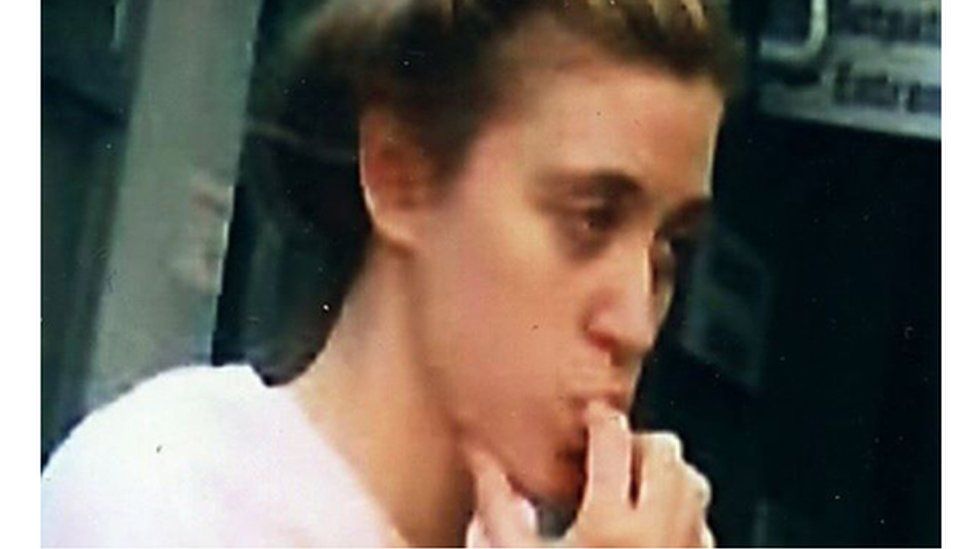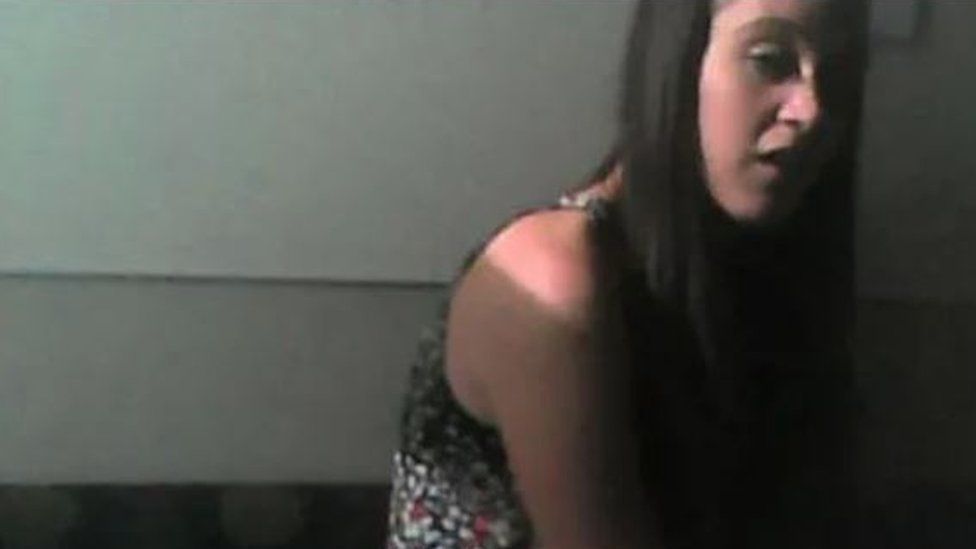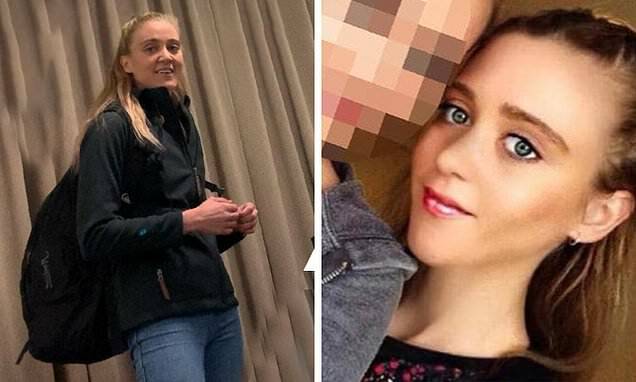Notorious Australian con artist Samantha Azzopardi has been sentenced to prison in Melbourne for child stealing. Having created a trail of false identities around the world, she has a history that runs deep.
Emily Peet, Lindsay Coughlin, Dakota Johnson, Georgia McAuliffe, Harper Hernandez, Harper Hart.
Behind all these names – and many more – was just one woman: serial fraudster Azzopardi, 32, from Sydney.
Over the past decade, she has been caught under assumed names in Ireland, Canada and various states within her home nation.
She was sentenced to two years in prison on Friday, having faked qualifications to get a job as a live-in nanny and taken the two small children across the state of Victoria without permission.
Melbourne Magistrate Johanna Metcalf said the motive behind the “bizarre crime” remains unclear.
In the past, Azzopardi has posed as a victim of sex trafficking.
She has claimed to be Swedish royalty and a Russian gymnast whose whole family died in a murder-suicide incident.
Throughout her 20s and early 30s, she repeatedly pretended to be a young teenager. And with her slight figure, soft voice and a tendency to nervously chew her fingers, she often got away with it.
For years she has been running into trouble with authorities. She has been deported from foreign countries, she has been jailed for short periods. Yet, the saga seemed never-ending.
As the magistrate pointed out, there has been no monetary motivation for her actions and she does not appear to be actively seeking fame.
During the trial, the court heard that she had been diagnosed with a severe personality disorder and a rare condition called pseudologia fantastica, which manifests itself in compulsive lying.
Care issues have delayed the trial repeatedly.
The fake au pair
The latest court case hinged on a 2019 incident in Victoria involving a French couple, who have remained anonymous.
Azzopardi told them she was an 18-year-old au pair called Sakah. During her brief period of employment, she asked to take the children out on a picnic, but instead of staying locally in Geelong, she took them to Bendigo, some 200km (120 miles) away, where she was eventually spotted by a police detective.
Before she was intercepted in a department store, she had visited a nearby counselling service and presented herself as a pregnant teenager.
She had dressed in school uniform and even arranged for an unknown person to call the service, pretending to be her father.
Previously, Azzopardi also spent almost a year working as a nanny for Tom Jervis, a Australian professional basketball player, and his wife, Jezze, an ex-lawyer turned life coach.
The couple said they found her through a web service for au pairs and trusted her at first. She moved into their house and relocated with them from Brisbane to Melbourne.
But her story started to unravel when the couple received reports about her using Mrs Jervis’s identity to pretend to be a casting agent.
She had befriended a 12-year-old girl, telling her she could get her a job as a voiceover artist in a Pixar movie.
“I treated her like my daughter,” Mrs Jervis told Australian website MamaMia, saying she felt violated when she found out the truth. “We knew she’d lied to us. It just didn’t make any sense.”
Playing mute in Dublin
Irish police detective David Gallagher also had a strange encounter with Azzopardi, when she turned up in Dublin in October 2013.
He did not know her name then. No-one did.
In the local media, she later became known as GPO girl, because she had been found outside Dublin’s General Post Office, which is often referred to by its initials.
The Garda Síochána (Irish police force) found her pacing back and forth, looking distressed, but refusing to speak.
Two officers took her to hospital and for weeks she did not say a word, leading authorities to fear she was a victim of human trafficking.
Though she never told them her age, she indicated through hand signals that she was 14.
Police investigators examined CCTV footage and carried out door-to-door enquiries.
They worked with child welfare specialists and reached out to missing persons services, Interpol, a forensic science laboratory, the immigration bureau, the domestic violence and sexual assault unit.
Noticing that braces on her teeth had been recently fitted, they contacted paediatric orthodontists across the country to see if they remembered her.
Det Supt Gallagher said there were always questions over her age but he never expected her to be entirely ungenuine.
“There was no endgame,” he told the BBC. “She was put in a children’s hospital, not eating, not talking. It wasn’t fun.”
His investigations unit ended up seeking special permission from the high court to share her picture during a public plea for information, as she was deemed a minor.

Nonetheless, someone recognised her: a family contact she had been staying with at the start of her trip to Ireland.
Azzopardi was identified and put back on a flight to Australia, escorted by police. She never spoke on the journey.
“When the truth of her situation and age became known, this divided opinion within those on the investigation team and those managing this investigation,” said Det Supt Gallagher.
“There were calls from some to move to a criminal investigation for wasting police time by making a false report, while others, including myself, felt that in a legal sense she in fact never made any statement or false report as she had never spoken.
The matter should be treated as a mental health and welfare issue.”
She under went a mental health assessment but her issues were not deemed to be of a level to require intervention.
An invented kidnapping in Calgary
The following year, Azzopardi turned up in Calgary, Canada. A similar story played out but this time she vocalised it.
She claimed she was Aurora Hepburn, 14-year-old victim of abuse, who had escaped a kidnapper. She was 26 at the time.
Again, investigators and health care workers spent weeks on the case, until someone discovered the Dublin story and made a connection.
This time she was convicted on a mischief charge for misleading Calgary police.
Kelly Campbell, of the police’s child abuse unit, said:
“There was considerable impact to a lot of the professionals that were working on this investigation as we were led to believe that this was an actual occurrence and our concern was that there were victims that were out there, more victims.”

The Calgary Herald reported that documents submitted at the hearing showed that, just six months after Azzopardi was deported from Ireland, she was back in that country again working as an au pair, after managing to get another passport from Australian authorities.
Azzopardi was deported from Canada and, again, given a police escorted flight back to Australia.
There have been countless other stories, countless other identities.
A US backpacker, Emily Bamberger, told the Courier newspaper how Azzopardi manipulated her in Sydney in 2014, just before the Canadian episode.
She told her she was a Swedish royalty, Annika Dekker, and she had been kidnapped when she was a young girl.
On another occasion, Azzopardi led a Perth family to believe she was a Russian gymnast, whose entire family had died in murder-suicide incident in France.
In one of the most extraordinary incidents, she convinced social services in Sydney that she was a teen victim, and managed to get enrolled in a school and put into a foster home.
The sentencing
Wearing prison blue clothes and a matching face mask, her blonde hair piled on her head in a bun, Azzopardi looked at the ground as her sentencing played out via video link, due to Covid restrictions.
This time, she had pleaded guilty.
Defence lawyer Jessica Willard said her client had not planned to keep the two children – aged four and 10 months – from their parents, or to harm them.
The magistrate agreed that they had not been harmed physically, but expressed concerns about emotional damage to the family and the separate 12-year-old, whom she had manipulated and promised a film role.
She also acknowledged the concerns over Azzopardi’s mental health. The court had heard how she had been subjected to severe trauma and abuse in her past.
Psychiatrist Jacqueline Rakov recommended she be released if she received voluntary treatment and case management under specialist services, yet the prison refused to give the necessary referral.
Azzopardi has already spent more than a year and a half in pre-trial detention, meaning she may be eligible for parole. The prosecution claimed there was high potential for reoffending.
Det Supt Gallagher said he had been following her case from afar for the past eight years. People sent him clips every so often, whenever she turned up somewhere new.
On the huge, costly hunt she sparked in Ireland, he said: “If I was involved in a similar type situation again, I would take the same approach again and err on the side of a person being a traumatised and vulnerable victim of crime.”
“The problem,” he said, “is whether prison a suitable place for her. Is a mental health institute? Is she a danger to herself, or is she a danger to others? In Ireland, she wasn’t a danger to herself or others, albeit she was a considerable nuisance.”
bbc




